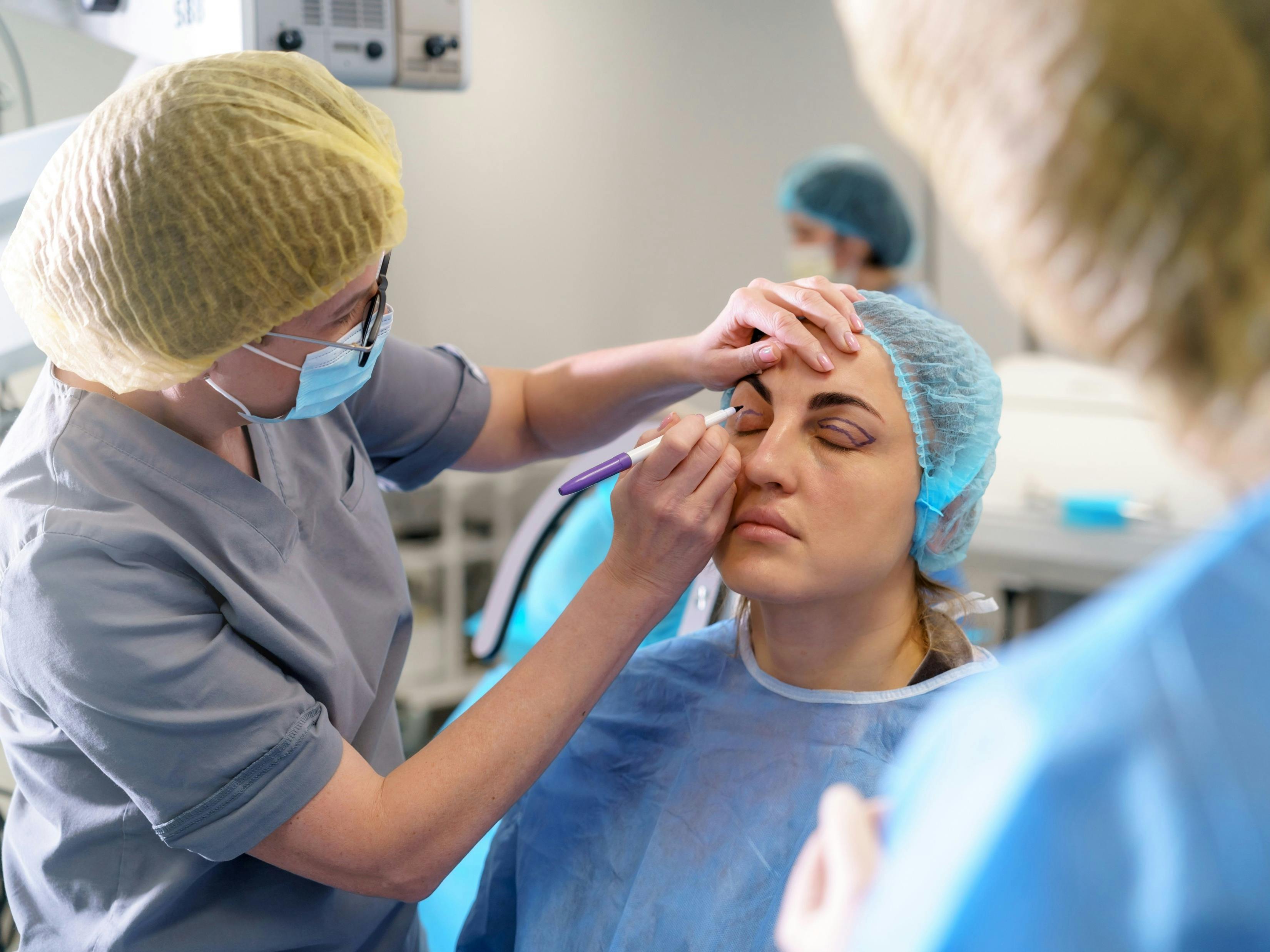
Gravity and time do a real number on all of us, but their effects are especially noticeable when it comes to our skin.
Most of the time, eyelid surgery is thought to be cosmetic, such as to reduce chronic puffiness or address sagging lower eyelid skin. However, in some cases, eyelid surgery can also be medically necessary, such as if the excess skin hangs low enough to block vision.
Medicare may cover lower and upper eyelid surgery if it’s considered medically necessary and performed to correct functional problems or reconstruct the eye area (for non-cosmetic purposes). However, there’s certain criteria beneficiaries must meet in order for the surgery to be covered. Read on to learn more.
Medicare coverage for eyelid surgery
If deemed medically necessary, eyelid surgery may be covered by Medicare Part B (medical insurance). Drugs that are prescribed post-surgery may be covered by Part D prescription drug coverage.
Otherwise, if desired for only cosmetic reasons, eyelid surgery will not be covered and you must pay the full cost out-of-pocket.
In order for eyelid surgery to be approved, the surgery or procedure must meet certain criteria such as:
- Excess eyelid skin is diagnosed via a physical examination
- The procedure must be medically necessary
- There must be proof of at least 30% or 12 degrees of obstruction of the visual field (determined via a visual field test performed by a Medicare-approved ophthalmologist)
- Photographs and documentation of visual problems may be required by Medicare
Some examples of procedures that may be covered include:
Blepharoplasty for hooded eyes
Severe eyelid drooping can cause the skin of the eyelids to cover a significant portion of the eye, causing vision problems.
Eyelid cancer surgery
This removes cancerous cells from the external skin of the eyelid and uses techniques to help preserve healthy surrounding tissue.
Ectropion and entropion surgery
These procedures are used to correct eyelids that turn inward or outward, causing the eyelids to not shut completely.
Note that there are some medically necessary eyelid surgeries that may also improve appearance but are still covered by Medicare. For example, performing surgery on severely drooping eyelids may help improve a person’s vision but also (unintentionally) improve their appearance. Whether the patient achieves both healthier eyelids and improved appearance should not impact coverage as long as the procedure is considered medically necessary.
Do Medicare Advantage plans cover eyelid surgery?
Medicare Advantage (Part C) plans have the same benefits as Original Medicare Part A and Part B, and they also typically offer additional coverage for things like vision, dental, hearing, and prescription drugs.
Because Medicare Part B does cover eyelid surgery in some cases, it would also be covered by Medicare Advantage plans. However, the same criteria must be met and the procedure must be deemed medically necessary.
What is eyelid surgery?
Some reasons your provider may recommend eyelid surgery is if you have:
- Impaired vision from sagging skin
- Irritation or rubbing caused by excess skin on eyelids
- Muscle strain as a result of lifting sagging eye skin
- Eyelid complications due to thyroid disease, cancer, or another condition
- A previous injury that has caused a defect to the eyelid
Blepharoplasty is one of the most common eyelid surgery procedures performed to correct drooping eyelids. Typically performed on an outpatient basis, this procedure would be covered by Part B.
Prior to the procedure, the eyelids are numbed. Then, during the procedure, the surgeon will make small incisions along the upper or lower eyelid folds (or both depending on the situation). Excess skin is removed, along with any excess fat or muscle. Then, the incisions are closed.
After eyelid surgery, you may be instructed to:
- Apply ice packs to your eyes
- Avoid wearing contact lenses
- Wear sunglasses whenever outdoors
- Use prescription drops or ointments, and/or
- Sleep with your head elevated
Many patients experience a few side effects after surgery such as swelling and bruising around the eyes or extra watery eyes. If you have bleeding, chest pain, unexplained new eye pain, or shortness of breath, contact your provider immediately.
How much does eyelid surgery cost?
According to the American Society of Plastic Surgeons, the average cost of cosmetic eyelid surgery is $4,120, though costs and fees depend on your specific situation, the type of procedure, and the office’s location. Costs may include:
- Surgeon’s fees
- Hospital or surgical fees
- Anesthesia fees
- Prescriptions for medication
- Medical tests
If the eyelid surgery is covered by Medicare, you would be responsible for the Part B deductible ($226 in 2023) and then 20% of the Medicare-approved amount of surgery costs. Medicare would pay the other 80%.
If you have a Medicare Advantage plan, your costs may be different. Contact your plan for more information.
And if you’re looking for a way to save on your Medicare costs, it may be a good time to compare your Medicare plan options – an easy task with our Find a Plan tool! Just enter your zip code to start review the costs and benefits of Medicare plans in your area.
Additional resources
Find a Medicare Plan
Internal Website Link



